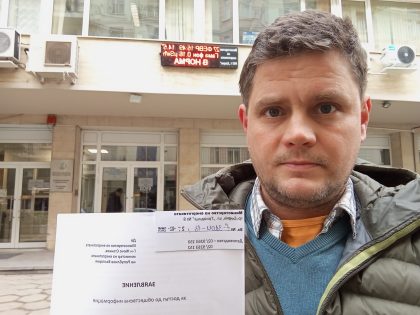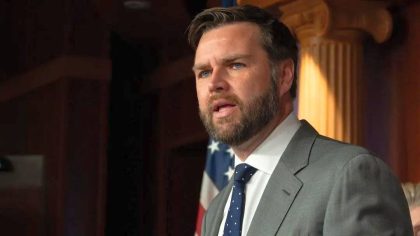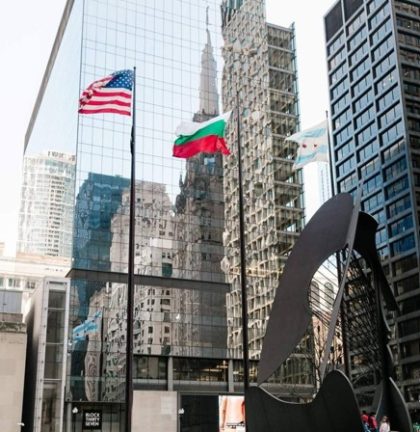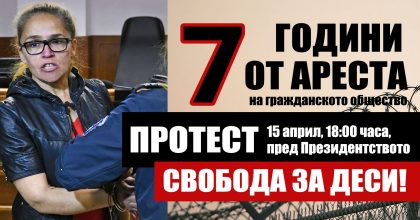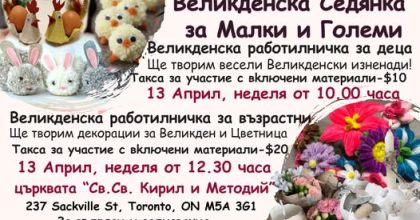Jayne Clark, USA TODAY
September, 2013
SOFIA, Bulgaria – In Europe’s most affordable capital, a night in a four-star hotel goes for less than $100. The dinner tab for two with a bottle of house wine runs about $40. And cab fare costs less than $1 a mile.
The city ranks tops on several travel affordability indexes, including TripAdvisor’s TripIndex Cities 2013, which tallied daily expenses at $158.42. That’s 73% cheaper than in Oslo, the priciest destination, where the per diem came to $581.
But low cost is only one reason to visit this little-known – to Americans, anyway – Balkan capital.
The city is full of delightful surprises, from the yellow brick roads in its historic center to the partially exposed, 1,800-year-old Roman city that lies beneath. You can enjoy a 60-minute Bulgarian rose massage in the ruins of a 3rd-century coliseum for about $55, or take in an outdoor opera performance for less than $10. There’s hiking and skiing on 7,500-foot Vitosha Mountain, the highest of the peaks surrounding the capital. Within the city are dozens of lovely parks, where on any given day you might happen across tango dancers perfecting their moves or old men contemplating a chess board.
I visited in July when hotel rates are rock-bottom, thanks to the dearth of business travelers. (A prepaid Internet booking at the five-star Grand Hotel Sofia came to $116, with tax.) But because language can be a challenge – many places are signed only in Cyrillic – I link up with Lyuba Boyanin of Lyuba Tours. The former engineer, who, like many Bulgarians, was compelled to seek an alternate livelihood after the fall of the Iron Curtain in 1989, has an encyclopedic knowledge of Sofia and beyond.
It’s a Friday evening and a torrent of residents, some of them swathed in green, red and white Bulgarian flags, are streaming toward the parliament building. Calls for the Socialist-backed government to step down began in June and residents had been convening daily to peacefully, but loudly, protest. The diversity of the crowd – parents balancing tots on their shoulders, old people hobbling on canes and uniformed soccer teams carrying banners – lends a convivial atmosphere to the demonstrations.
„Bulgarians are the last people to protest,“ Boyanin says. „When it gets to this, it means they’ve had enough.“
Even away from the protests, Sofia exudes a spirited energy. And with a number of low-fare carriers now flying here, it’s attracting more European visitors, particularly students.
„It’s becoming more of a trendy place,“ says Thomas Higgins, an American businessman who has lived in Sofia for 20 years. „It’s a nice destination for people looking for adventure out of the mainstream. There are a lot of new things to be explored.“
On one of two daily Free Sofia Tours, the mostly twenty- and thirtysomething participants hail from a dozen countries. The tours, led by English-speaking students, take in the compact downtown’s major sites. We walk along the twice-baked clay cobblestones that give the streets their yellow hue and peer into unearthed remnants of the Roman city of Serdica, circa 300 A.D. (Emperor Constantine called the city „my Rome.“) More ruins are visible in the city’s new and efficient subway system.
An excellent new museum beneath the 6th-century Church of Saint Sofia showcases tombs dating from 2 B.C. to the 5th century that were discovered by workers repairing pipes. And a decade ago during excavation for a new hotel, an amphitheater only slightly smaller than Rome’s coliseum, was discovered. Hotel construction continued, though plans were modified to incorporate parts of the ancient arena where gladiators once faced off against wild beasts. Today, guests at the Arena di Serdica Hotel get gentler treatment in the hotel’s spa that abuts the arena’s stone walls.
But the city’s most striking architectural landmark is the magnificent Alexander Nefsky Cathedral. Boyanin and I arrive at the end of Sunday services to the sound of Gregorian chants performed by Orthodox priests. Its cavernous fresco-adorned interior can accommodate 10,000 worshippers and the 12 bells in its tower are still rung by hand.
Like many of Sofia’s most significant structures, the cathedral, completed in 1912, is young by European standards. Despite its centuries-old roots, Sofia didn’t become a capital until 1879, a year after the Russians liberated the country from 500 years of Ottoman rule. The oldest buildings, a mix of stately Viennese, neo-Renaissance and other grand styles, date to the late 1800s. Unattractive prefabricated apartment blocks from the post World War II Soviet era rise from the city’s farther reaches.
The city supports a lively arts scene. Rakovski Street, Sofia’s Broadway, is lined with theaters. Jazz is huge. So are dance clubs, where a mix of Serbian and Turkish pop/rap called chalga – and widely disdained by the intelligentsia – attracts young nouveau riche.
On a Saturday night, the scene is just revving up when Boyanin and I pop into Sin City, one of Sofia’s cavernous nightclubs featuring late-night chalga performances. Dancers showing lots of skin gyrate on backlit platforms. The clientele lounges at tables with bottle service. The scene is in sharp contrast to a prior stop at an unassuming bar, where youthful patrons were polishing their Bulgarian folkdance moves.
Earlier, we’d dined at Pod Lipite, a popular eatery that serves specialties like wild boar with plums. and nettles with cheese. Bulgarian meals invariably start with shopska salad – tomatoes and cucumbers topped with grated feta cheese. The pace is leisurely. It can be hours before people get around to ordering a main course, Boyanin notes.
„When the first McDonald’s opened in 1994, people would stay for hours,“ she says. „Finally, they put up a sign, ‘Buy. Eat. Go.’ and imposed a one-hour time limit.“
Pedestrian-only Vitosha Boulevard is lined with outdoor cafes and international brands., though residents seem to favor the growing number of enclosed shopping malls. But several streets, such as Angel Kanchev, harbor small shops owned by young designers crafting one-of-a-kind clothing, jewelry and more.
It’s a far cry from what expat Paromita Sanatani found when she arrived here in 1992.
„It was sad, gray and run down,“ recalls Sanatani, who married a Bulgarian and publishes the visitors guide, Sofia in Your Pocket.
In those early post-Soviet days, shops carried a mashup of random items. „There was no such thing as a specialized shop. People just sold what they had,“ she says.
The Soviets developed Black Sea and ski tourism in Bulgaria in the 1970s as a means of attracting foreign currency. But beyond the bargain-basement sun-and-sea packages marketed to Europeans, tourism in Bulgaria as a whole, and Sofia in particular, is in its infancy.
That’s changed, though. Sofia is vying to be the 2019 European Capital of Culture. And direct air service may begin next year from Chicago.
„Sofia is safe. It’s manageable. It has tranquility to it,“ says Higgins. „And, it’s affordable.“
Bang for the buck
Four-star hotel for two: $96.29
Two cocktails: $16.91
Two-course dinner for two with wine: $40.44
4-mile cab ride: $4.78
Source: TripAdvisor
If you go …
• Getting there: In addition to major international airlines, a number of low-fare carriers fly to Sofia from within Europe. Among them: Easyjet, Air Berlin and Wizz Air.
• Where to stay: Sofia lodging rates are generally lower in summer due to a drop in business travel. You can also get lower rates at some hotels by pre-paying online directly with the hotel.
• Grand Hotel Sofia, a full-service business hotel, has spacious rooms starting at about $145, double. Rates at the chic new 71-room Sense Hotel start at about $150. The 25-room Hotel Arte has rooms from $66 in summer; $80 high season. Arena di Serdica, whose lobby and spa incorporate parts of a 3rd-century coliseum, has rooms starting at about $125, double.
• Seeing the sights: A number of free, regularly updated guides are available. A good one: Sofia in Your Pocket, is available at hotels and other tourist venues.
• The Free Sofia Tour is a twice-daily free walking tour of the heart of downtown led by volunteer English-speaking guides.
• For a more in-depth experience, Lyuba Tours offers a variety of three-hour architectural and historic outings for about $13; $6, students.
• Information: bulgariatravel.org
